There are places that can be hard to visit. Somehow every time I was in London, had time and thought of it, the Banqueting House was closed. This year before visiting London I made a list of places I had never been to. The Banqueting House was high on my list. The place is supposed to be open daily from 10am to 5pm, but it regularly happens that there are events in the afternoon. That was again the case when I tried this time. However the next day – the last day of my London visit – I was more lucky, and finally got in! It did cost some time to find it, as the building doesn’t really stand out between all these government buildings and statues – it is actually quite close to the Horse Guards Parade – and enjoyed my time at the hall.
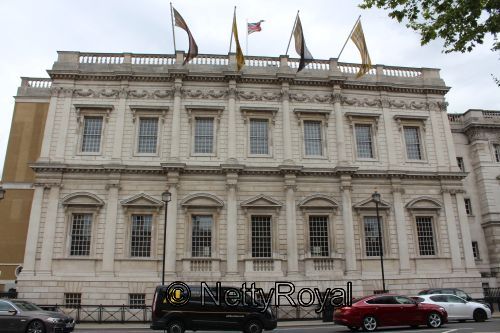
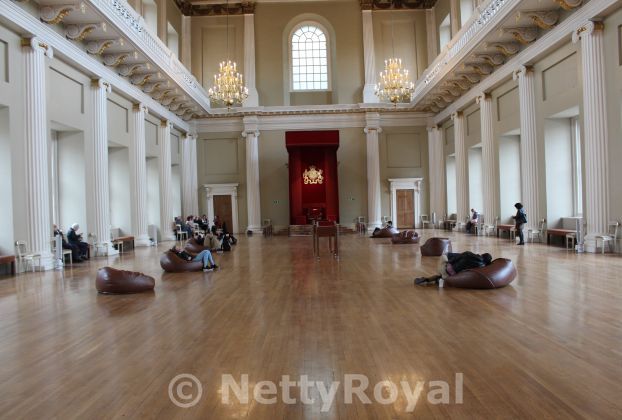
The Banqueting Hall is the only remaining part of the Whitehall Palace, from 1530 to 1698 the main residence of the English monarchs. The large palace had more than 1,500 rooms. York Place, as it at first was called, was acquired by King Henry VIII after he had removed Cardinal Wolsey from his power. The name Whitehall was soon used. Of course Henry VIII had York Place redesigned and extended. He married two of his six wives, Anne Boleyn and Jane Seymour – at the palace, and died here in January 1547. His daughter Queen Elizabeth I completed the building. At the time it was the largest palace in in Europe. The southern part of the palace burnt down in 1691, on 4 January 1698 followed by the remainder … except for the Banqueting House. King William III ordered to make huge efforts to save the house. However during the fire many important pieces of art at the palace were destroyed. A few remains of the palace were incorporated into new buildings at Whitehall.
The Banqueting House was actually a much later extention. It was King James I, who united the thrones of England and Scotland, who had the house built. He instructed Inigo Jones to design the house in 1622 to replace several banqueting houses from the times of Elizabeth I. Jones was inspired by the classical architecture of ancient Rome. Around 1629-30 King Charles I commissioned the famous Flemish painter Peter Paul Rubens to paint nine ceiling canvases. They were finally installed in 1636. The three main paintings depict the union of Scotland and England under King James I.
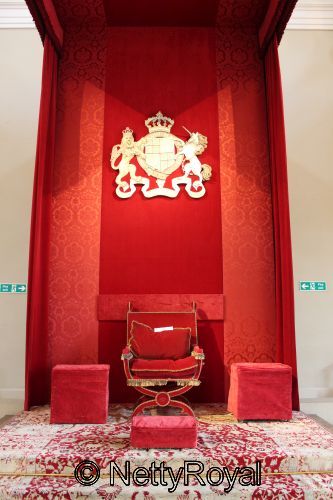
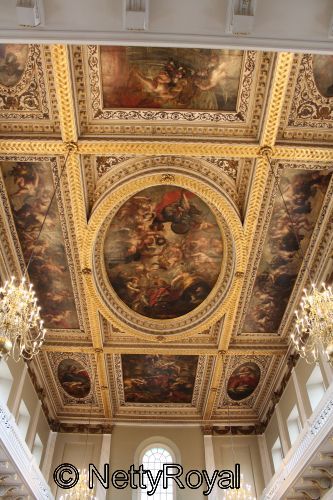
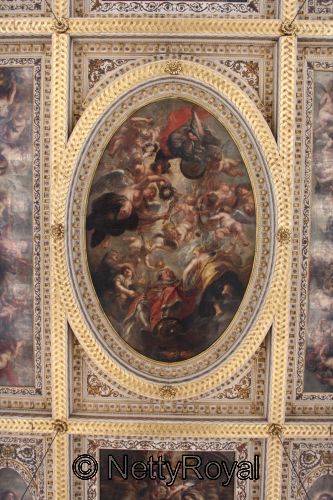
A variety of important events took place at the Banqueting House. A banqueting house was used for performances of Masques in which the King and Queen sometimes took part, important audiences, grand ambasssadorial receptions and parties. On 30 January 1649 King Charles I was executed on the pavement of Whitehall, just outside the Banqueting House. His death is yearly remembred with a service in the house on 30 January. In February 1689 King William III and Queen Mary II were read the Bill of Rights here before jointly accepting the crown.
In 1808 the house became a military chapel. Renovations were carried out at the exterior between 1829 and 1837. Queen Victoria in 1896 made it into a military museum. Since 1964 it is being managed by Historic Royal Palaces as a museum and events venue. When you enter and have bought your ticket, you’re first directed to the right. In a cellar-like hall you can watch a nice video about the history of the Banqueting House. Then you go back to the desk if you’d like to have an audio tour. I took one, although I am not a fan, started, but never completely finished listening to all the stories. I rather wanted to hang around, have a look at the ceiling and some other interesting items. The house was according to me certainly worth a visit, even when it is more or less just one big hall you can visit.
